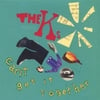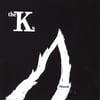The other day I noticed the following bicycle and took a photo:

Note that there are many spokes on the wheel – many more than necessary. It is bad engineering, this wheel. And yet it caught my eye and was interesting enough for me to take a photo. This is due to the tyranny of novelty. Something does not have to be good to attract attention. It merely needs to be novel. So the over-spoked wheel looks cool in its way simply because it's unusual.
It is 19th-20th century industrialization that has led to this condition. Mass production and standardization of consumer products have filled our material needs (or could fill them, but we choose not to afford everyone a baseline share in the riches -- that's another topic). But they've also made our product-scape a monotonous one. Where every bicycle, car, building, jacket, or fork looks more or less the same, spastic deviations get undue credit and attention. And yet I wouldn’t want to go back to pre-industrial levels of scarcity.
Fortunately we are poised on the verge of a new mode of mass production, with near-infinite variety being possible while maintaining low cost of goods and services. In such a society novel items will be commonplace – not novel at all – and thus would be judged based on their intrinsic merits and not difference for its own sake.
Yes, there will still be items that are produced with what are now considered traditional methods. There will be products issued in lots numbering in the millions. But eventually my hope is that individuals will take a larger role in creating (or at least choosing – and there is some feedback between the two) their product-scape. This could be extrapolated to a world consisting entirely of unique items. In such a place fashion would be eliminated, as every fad would be regarding a product-issue of one item.
This is already starting to happen in digital media, where the masters of content origination are losing market share to individuals. Yes, we all watch stuff put out by the networks, but there are new content producers and distributors catering to ever-smaller slices of the market. Web TV channel for Renaissance Fair enthusiasts? Check. Star Trek channel? Check. Dog TV? Check.
At some point there will be more content being originated than the gatekeepers will be able to categorize or mediate. The velvet rope will be trampled by all of the traffic flowing from originators to consumers. And eventually all consumers will be originators – creative life will be the norm, not the exception.
--Steve Kilian
That Old-Time Magic, Revisited





No comments:
Post a Comment